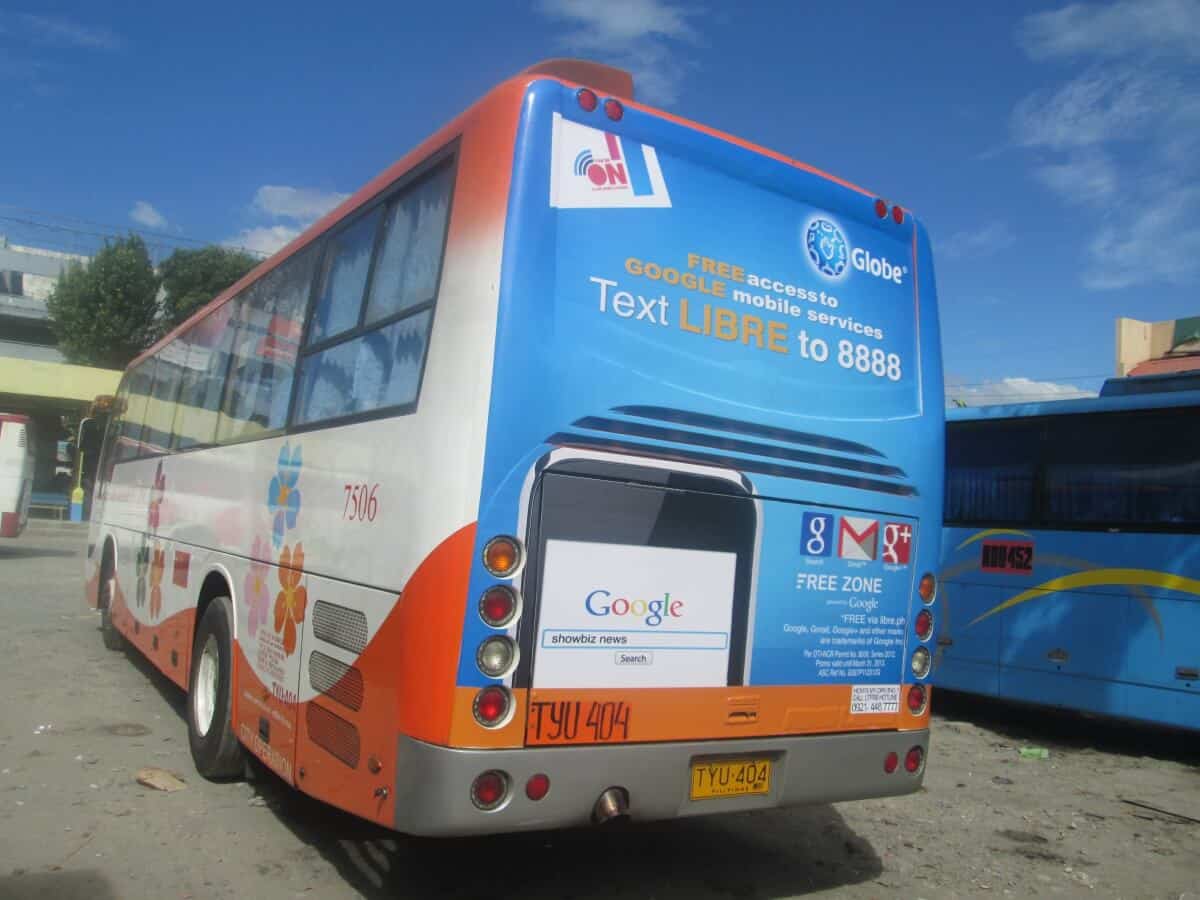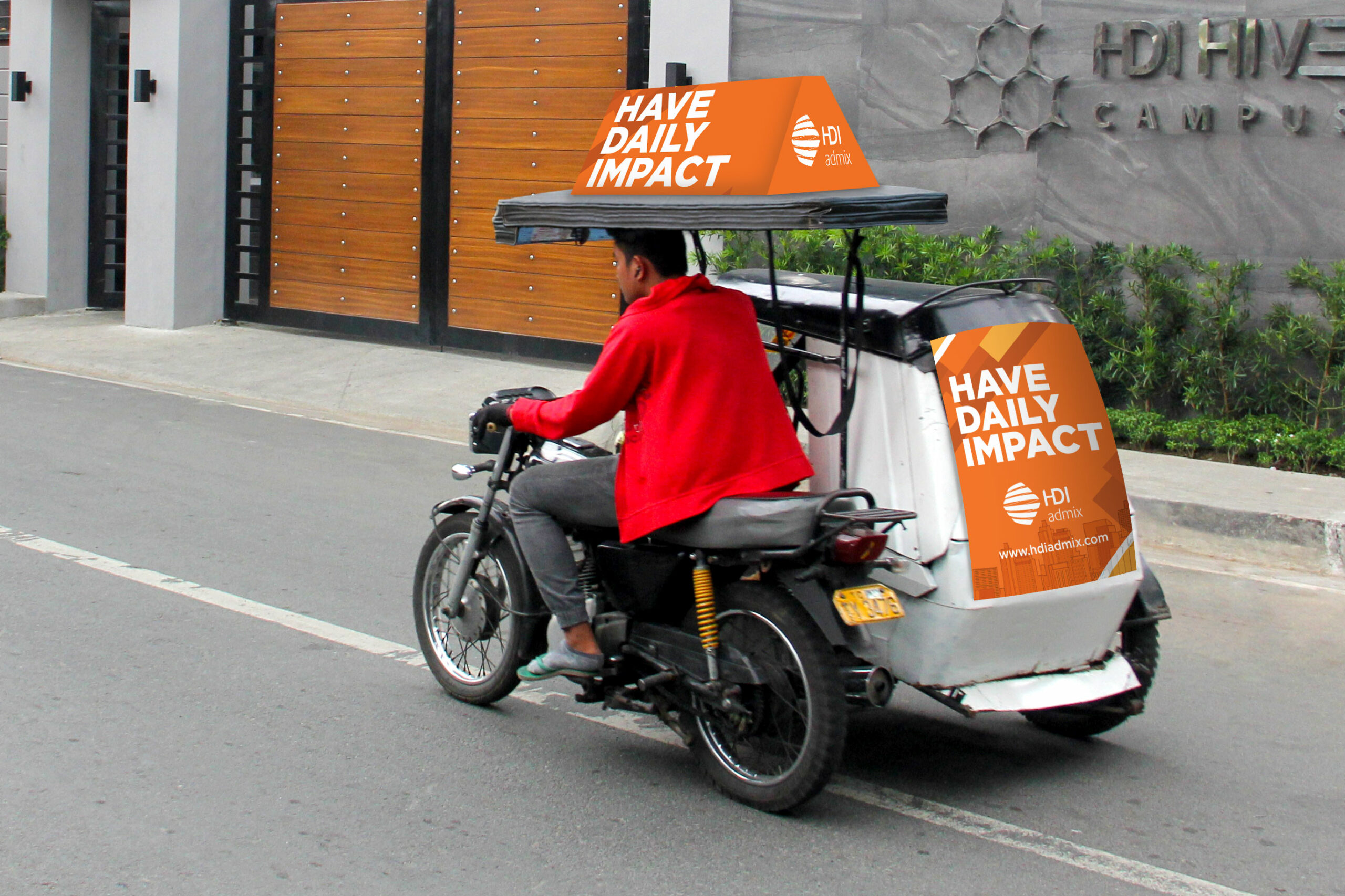Economical Transit Advertising Philippines for Brand Name Understanding
Economical Transit Advertising Philippines for Brand Name Understanding
Blog Article
Recognizing the Function of Transit Marketing in Enhancing Brand Name Presence and Consumer Engagement
Transit advertising and marketing has actually become a critical element in the marketing landscape, providing special possibilities for brand names to elevate their presence and engage consumers properly. With the ability to get to a restricted and diverse audience during their everyday commutes, these advertising and marketing techniques are not merely about presence; they are about creating purposeful links with possible customers. As we discover the diverse advantages and ingenious methods within transportation advertising, it comes to be important to take into consideration exactly how these aspects collectively affect customer understanding and habits, increasing questions concerning their long-lasting influence on brand loyalty.
Interpretation of Transportation Advertising And Marketing
Transportation advertising describes the technique of promoting items, solutions, or brand names through ads positioned in and around public transportation systems. This type of marketing includes a selection of placements, including posters on trains and buses, digital displays at transportation terminals, and covers on the exterior of cars. It aims to reach a varied audience, maximizing the high foot traffic connected with public transit.
Transportation advertising and marketing is purposefully positioned to catch the interest of commuters, who commonly invest significant time traveling or waiting. By incorporating promotions into the daily regimens of people, brand names can develop a lasting impression and foster brand name recognition. The tool is specifically reliable in metropolitan atmospheres, where public transport is a key mode of travel.
Additionally, transit advertising and marketing can help with local targeting, enabling businesses to reach details demographics based on transportation paths and station places. As urban populations grow and making use of public transportation increases, this advertising technique has gotten prominence as a crucial element of integrated advertising strategies. The dynamic nature of transit advertising and marketing, combined with its ability to engage customers in a captive environment, emphasizes its significance in modern advertising methods.
Advantages of Transit Marketing
The performance of transit advertising exists in its capability to deliver a multitude of benefits to brand names seeking to boost exposure and engagement. One of the primary advantages is the considerable reach it uses; transportation ads can successfully target diverse demographics throughout city locations, getting to both travelers and pedestrians alike. This broad exposure significantly improves brand awareness.
One more benefit is the high regularity of perceptions. As transportation lorries follow well established routes and stop at numerous locations, they produce repeated direct exposure that enhances brand name messages. This regularity fosters knowledge, which is important in consumer decision-making.
Transit marketing is additionally economical compared to various other media platforms. Given its expansive reach and potential for high perceptions, brand names frequently experience a lower price per thousand impacts (CPM), optimizing their advertising and marketing budget.
In addition, transit advertisements can develop a sense of community connection. By aligning with regional transit systems, brands can reverberate with regional audiences and cultivate a sense of regional pride. This local technique boosts brand commitment and interaction, making transportation marketing a compelling option for companies intending to strengthen their existence in the market.

Reliable Approaches for Transportation Campaigns
To make the most of the influence of transit campaigns, brands should utilize tactical preparation and implementation customized to their target audience. First, recognizing the market qualities of the audience making use of public transportation is essential. This allows additional hints brand names to create personalized messaging that reverberates with prospective consumers.
Next, selecting the ideal transportation tools is vital. Whether utilizing bus wraps, train posters, or electronic screens, each medium has special advantages that can enhance exposure. As an example, vivid visuals on bus wraps can stand out, while digital ads can be updated linked here frequently to show timely promotions.
Additionally, incorporating a natural branding strategy throughout transportation platforms guarantees uniformity and enhances the brand's identification. Making use of attractive styles and unforgettable taglines will certainly enhance brand recall amongst commuters.
Lastly, timing is a vital element in carrying out successful transportation campaigns. Releasing projects throughout height travel hours or neighborhood occasions can considerably boost exposure and involvement. By employing these strategies, brands can properly harness the capacity of transportation advertising and marketing, promoting higher recognition and link with their target audience. Ultimately, a well-executed transit project can drive substantial growth in brand name exposure and customer interaction.

Gauging Impact and Involvement
In reviewing the effectiveness of transit ad campaign, precise measurement of impact and engagement is necessary for brand names seeking to maximize their advertising methods. Metrics such as reach, frequency, and impacts give foundational information to analyze visibility. Examining these elements assists identify the number of possible consumers are subjected to the ads throughout their daily commutes.
Involvement can be more assessed through consumer interactions, such as web site traffic, social networks states, and straight feedbacks to calls-to-action included in the ads. Using tools like QR codes or distinct URLs can promote tracking of customer behavior directly linked to transit campaigns. Studies and feedback mechanisms additionally work as beneficial methods learn the facts here now to gather qualitative information on consumer perceptions and recall of the promotion.
Moreover, advanced analytics and attribution designs can correlate transit exposure with succeeding acquiring behavior, offering insights into the return on financial investment. By using a comprehensive approach that incorporates quantitative and qualitative actions, brand names can establish a nuanced understanding of their transportation marketing impact. Eventually, this data-driven approach allows brands to refine their projects, guaranteeing they resonate effectively with target market and enhance total brand name presence.
Instance Research Studies of Successful Campaigns
Effective transit advertising campaigns work as engaging examples of exactly how efficient methods can elevate brand exposure and involvement. Transit Advertising Philippines. One remarkable case is the "I Love New York" project, which transformed the city's picture and drew in countless travelers. By using subway ads, signboards, and bus wraps, the campaign created a strong, natural brand identification, leading to a significant uptick in tourist and neighborhood service patronage
An additional exemplary campaign is Coca-Cola's "Share a Coke" initiative, which leveraged transit advertising to customize the brand experience. By featuring popular names on advertising materials throughout various transportation platforms, Coca-Cola fostered a much deeper emotional connection with customers, motivating them to share their experiences on social media.
Furthermore, the "Got Milk?" project successfully made use of public transport ads to get to a broad target market, strengthening the message of the value of milk in a balanced diet plan. The project saw a measurable rise in milk usage in target demographics.
These situation research studies illustrate that when carried out thoughtfully, transportation advertising can dramatically boost brand presence, foster consumer engagement, and drive measurable outcomes, showing its important role in modern-day advertising approaches. - Transit Advertising Philippines
Final Thought
Finally, transportation advertising works as a crucial tool for boosting brand presence and promoting customer interaction. By making use of strategically put promotions within public transportation systems, brands can effectively enhance and reach diverse target markets recognition through regular exposure. The application of targeted messaging and ingenious methods further intensifies the effect of transit projects. Inevitably, the ability to measure involvement and assess successful instance studies highlights the efficiency of transit advertising in driving brand name commitment and customer interactions.
Transportation advertising and marketing has actually arised as a pivotal element in the advertising landscape, providing special chances for brand names to raise their visibility and involve customers efficiently.Additionally, transit marketing can promote local targeting, enabling businesses to reach specific demographics based on transit courses and terminal locations.In examining the performance of transit advertising and marketing campaigns, precise measurement of impact and engagement is necessary for brands looking for to maximize their advertising and marketing approaches.Successful transportation marketing projects serve as compelling examples of how effective techniques can boost brand name exposure and interaction.In final thought, transportation advertising and marketing offers as a crucial tool for improving brand name visibility and promoting consumer interaction.
Report this page